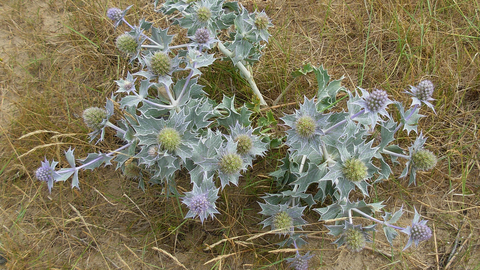
©Derek Moore
Sea-holly
Enw gwyddonol: Eryngium maritimum
The spiky, silvery leaves of Sea-holly give this plants its common name. Look for its beautiful, thistle-like, blue blooms on coastlines and sand dunes in summer.
Top facts
Stats
Height: up to 60cmConservation status
Common.
